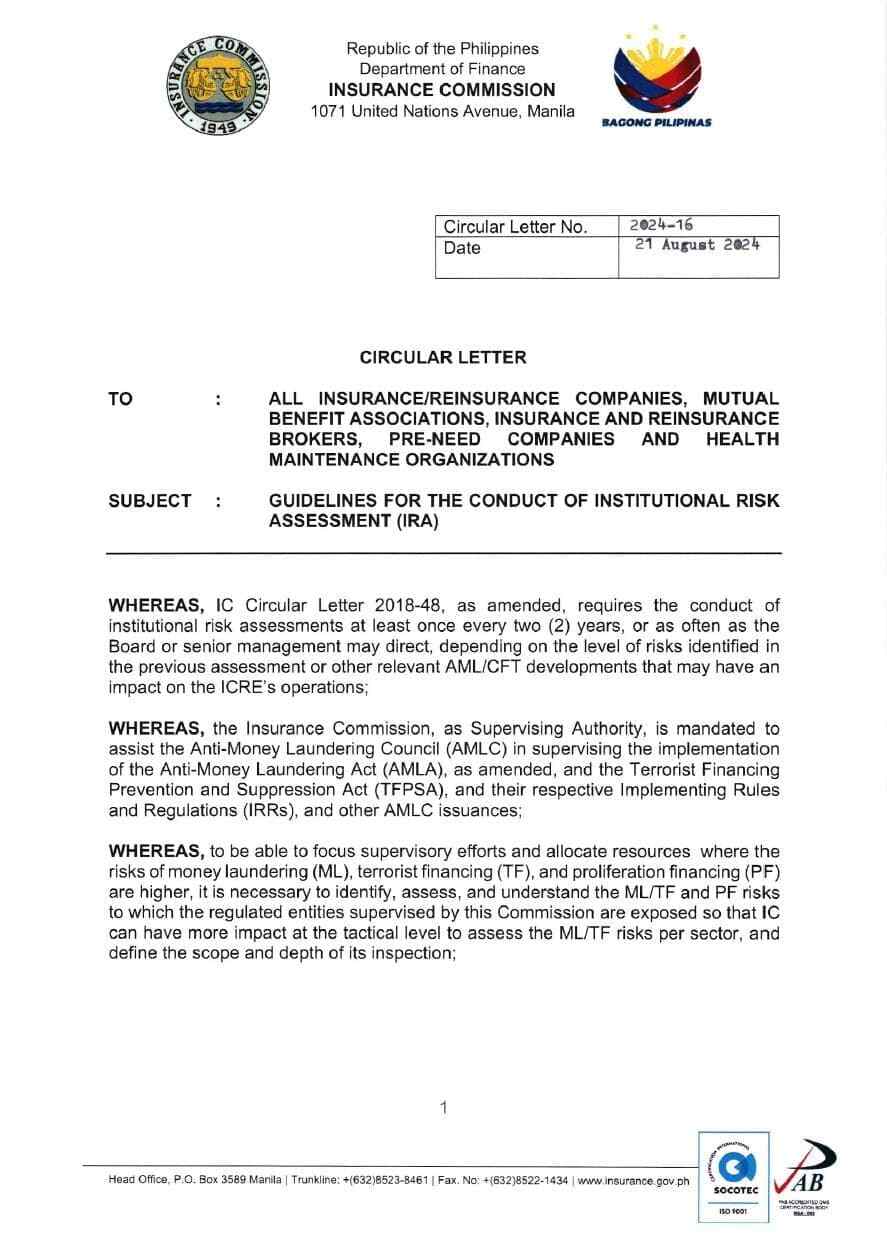-
Audit approach overview
Our audit approach will allow our client's accounting personnel to make the maximum contribution to the audit effort without compromising their ongoing responsibilities
-
Annual and short period audit
At P&A Grant Thornton, we provide annual and short period financial statement audit services that go beyond the normal expectations of our clients. We believe strongly that our best work comes from combining outstanding technical expertise, knowledge and ability with exceptional client-focused service.
-
Review engagement
A review involves limited investigation with a narrower scope than an audit, and is undertaken for the purpose of providing limited assurance that the management’s representations are in accordance with identified financial reporting standards. Our professionals recognize that in order to conduct a quality financial statement review, it is important to look beyond the accounting entries to the underlying activities and operations that give rise to them.
-
Other Related Services
We make it a point to keep our clients abreast of the developments and updates relating to the growing complexities in the accounting world. We offer seminars and trainings on audit- and tax-related matters, such as updates on Accounting Standards, new pronouncements and Bureau of Internal Revenue (BIR) issuances, as well as other developments that affect our clients’ businesses.
-
Tax advisory
With our knowledge of tax laws and audit procedures, we help safeguard the substantive and procedural rights of taxpayers and prevent unwarranted assessments.
-
Tax compliance
We aim to minimize the impact of taxation, enabling you to maximize your potential savings and to expand your business.
-
Corporate services
For clients that want to do business in the Philippines, we assist in determining the appropriate and tax-efficient operating business or investment vehicle and structure to address the objectives of the investor, as well as related incorporation issues.
-
Tax education and advocacy
Our advocacy work focuses on clarifying the interpretation of laws and regulations, suggesting measures to increasingly ease tax compliance, and protecting taxpayer’s rights.
-
Business risk services
Our business risk services cover a wide range of solutions that assist you in identifying, addressing and monitoring risks in your business. Such solutions include external quality assessments of your Internal Audit activities' conformance with standards as well as evaluating its readiness for such an external assessment.
-
Business consulting services
Our business consulting services are aimed at addressing concerns in your operations, processes and systems. Using our extensive knowledge of various industries, we can take a close look at your business processes as we create solutions that can help you mitigate risks to meet your objectives, promote efficiency, and beef up controls.
-
Transaction services
Transaction advisory includes all of our services specifically directed at assisting in investment, mergers and acquisitions, and financing transactions between and among businesses, lenders and governments. Such services include, among others, due diligence reviews, project feasibility studies, financial modelling, model audits and valuation.
-
Forensic advisory
Our forensic advisory services include assessing your vulnerability to fraud and identifying fraud risk factors, and recommending practical solutions to eliminate the gaps. We also provide investigative services to detect and quantify fraud and corruption and to trace assets and data that may have been lost in a fraud event.
-
Cyber advisory
Our focus is to help you identify and manage the cyber risks you might be facing within your organization. Our team can provide detailed, actionable insight that incorporates industry best practices and standards to strengthen your cybersecurity position and help you make informed decisions.
-
ProActive Hotline
Providing support in preventing and detecting fraud by creating a safe and secure whistleblowing system to promote integrity and honesty in the organisation.
-
Accounting services
At P&A Grant Thornton, we handle accounting services for several companies from a wide range of industries. Our approach is highly flexible. You may opt to outsource all your accounting functions, or pass on to us choice activities.
-
Staff augmentation services
We offer Staff Augmentation services where our staff, under the direction and supervision of the company’s officers, perform accounting and accounting-related work.
-
Payroll Processing
Payroll processing services are provided by P&A Grant Thornton Outsourcing Inc. More and more companies are beginning to realize the benefits of outsourcing their noncore activities, and the first to be outsourced is usually the payroll function. Payroll is easy to carve out from the rest of the business since it is usually independent of the other activities or functions within the Accounting Department.
-
Our values
Grant Thornton prides itself on being a values-driven organisation and we have more than 38,500 people in over 130 countries who are passionately committed to these values.
-
Global culture
Our people tell us that our global culture is one of the biggest attractions of a career with Grant Thornton.
-
Learning & development
At Grant Thornton we believe learning and development opportunities allow you to perform at your best every day. And when you are at your best, we are the best at serving our clients
-
Global talent mobility
One of the biggest attractions of a career with Grant Thornton is the opportunity to work on cross-border projects all over the world.
-
Diversity
Diversity helps us meet the demands of a changing world. We value the fact that our people come from all walks of life and that this diversity of experience and perspective makes our organisation stronger as a result.
-
In the community
Many Grant Thornton member firms provide a range of inspirational and generous services to the communities they serve.
-
Behind the Numbers: People of P&A Grant Thornton
Discover the inspiring stories of the individuals who make up our vibrant community. From seasoned veterans to fresh faces, the Purple Tribe is a diverse team united by a shared passion.
-
Fresh Graduates
Fresh Graduates
-
Students
Whether you are starting your career as a graduate or school leaver, P&A Grant Thornton can give you a flying start. We are ambitious. Take the fact that we’re the world’s fastest-growing global accountancy organisation. For our people, that means access to a global organisation and the chance to collaborate with more than 40,000 colleagues around the world. And potentially work in different countries and experience other cultures.
-
Experienced hires
P&A Grant Thornton offers something you can't find anywhere else. This is the opportunity to develop your ideas and thinking while having your efforts recognised from day one. We value the skills and knowledge you bring to Grant Thornton as an experienced professional and look forward to supporting you as you grow you career with our organisation.
Background
The lnsurance Commission, as a “supervising authority”, is mandated to assist the Anti-Money Laundering Council (AMLC) in supervising the implementation of the Anti-Money Laundering Act (AMLA), as amended, and the Terrorist Financing Prevention and Suppression Act (TFPSA). In line with this, lC Circular Letter 2018-48, as amended, requires the conduct of institutional risk assessments at least once every two (2) years, or as often as the Board or senior management may direct, depending on the level of risks identified in the previous assessment or other relevant anti-money laundering and combating the financing of terrorism (AML/CFT) developments that may have an impact on the IC regulated entities’ (ICREs) operations.
The Commission through Circular No. 2024-16, issues the guidelines to ensure that the AML/CTF institutional risk assessment by all ICREs is conducted comprehensively and uniformly.
Key Guidelines
The institutional risk assessment of ICRES involved defining the methodologies for AML/CFT and TFS risk assessments, specifying scope, and considering key elements to determine residual risk. It identifies sources of money laundering, terrorism financing and proliferation financing, and sanctions risks, assesses vulnerabilities in business operations and evaluates existing controls. ICREs are required to develop tailored policies, controls, and procedures to effectively manage and mitigate identified risks, thereby implementing a risk-focused strategy. The strategy shall follow the IRA process as prescribed in the guidelines.
- Planning and Scoping – ICREs should define the objectives and scope of the assessment. A project plan should be prepared to identify the units and personnel who will be involved in the IRA, as well as the milestones and timeline.
- IRA methodology - The risk assessment methodology should be tailored to the nature and complexity of the ICRE's activities and operations and will enable to capture and analyze the actual risk profile to achieve defined objectives of the assessment.
- Risk Assessment Process
- Identification – identify known or suspected threats and vulnerabilities (inherent risk and risk factor) relevant to ICRE.
- Analysis – analyze the likelihood and consequence of identified risks, assess the quality of risk management, and determine the residual risk.
- Evaluation – evaluate risk, vis-à-vis established risk appetite, and formulate prioritized action plans.
- Reporting – The IRA report containing the assessment results and recommendations must be submitted to the BOD for approval. Findings and any action plans should be communicated to the concerned personnel to foster shared understanding and effective implementation.
- Monitoring - The IRA is expected to be up to-date. IRA shall be conducted, at least once every two years, or as often as the BOD or senior management may direct, depending on relevant factors/developments
Please see attached circular for further guidance.


